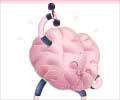A new study has found that moderate exercise may speed up the time wounds need to heal.
The mice model study, conducted by K. Todd Keylock, a professor of kinesiology at Bowling Green State University, noted that the decreased inflammation of damaged skin tissue might be the result of an exercise-induced anti-inflammatory response in the wound.“The key point of the study is that moderate exercise sped up how fast wounds heal in old mice,” Keylock said.
“That’s the key part that our study adds – that the acceleration and healing were associated with decreased levels of inflammation,” Keylock added.
Jeffrey Woods, a professor of kinesiology and integrative immunology and behavior at Illinois and a co-author in the study, said that the study points to another benefit to moderate exercise, which is decreased inflammation of damaged skin tissue.
“One of the proposed mechanisms whereby aging adds to delayed healing is that the aged have hyper-inflammatory response to wounding,” Woods said.
“The thought is that the exaggerated inflammatory response slows the healing process. So, in essence, what happened here is that the exercise reduced the exaggerated inflammatory response,” he added.
Advertisement
“Increasing blood flow during the time of exercise is one (possibility),” he said.
Advertisement
“And if exercise can help decrease the amount of inflammatory cytokines put out by macrophages, maybe that would help decrease the inflammation, and therefore, speed healing,” he added.
Cytokines are molecules that signal and direct immune cells, such as macrophages, to the site of an infection, Woods said.
According to Keylock, Macrophages play two critical roles in the wound-healing process.
“First, they help fight any infection that may have gotten into the wound, and they also help the wound repair itself and get back to its original strength,” he said.
Woods contemplated that if an exaggerated inflammatory response occurs when an older person incurs a wound, ‘the proinflammatory cytokines that the macropahges produce slow the rate of healing.
“And interestingly, macrophages are drawn to damaged tissue and hypoxic tissue, that is, tissue that has low oxygen content. Wounds, because of the damage to the blood vessels, typically are hypoxic, and macrophages are attracted to that,” Woods said.
“So one potential thing that exercise might be doing, although we would need to test this, is reducing hypoxia within the wounds. And it’s known that hyperbaric oxygen therapy – which has been used with burn patients – speeds wound healing in some people,” he added.
Keylock said that the public-health message of the finding applies not just to older people, but also to diabetics, those who are obese and many different populations at risk of having high levels of inflammation.
“The public-health message of this applies not just to older people, but also to diabetics, those who are obese and many different populations at risk of having high levels of inflammation,” Keylock said.
Those other populations include people with congestive heart failure and coronary heart disease.
“If exercise can help decrease inflammation, all of those populations would benefit,” he added.
The study is published in the American Journal of Physiology: Regulatory, Integrative and Comparative Physiology.
Source-ANI
KAR/P












